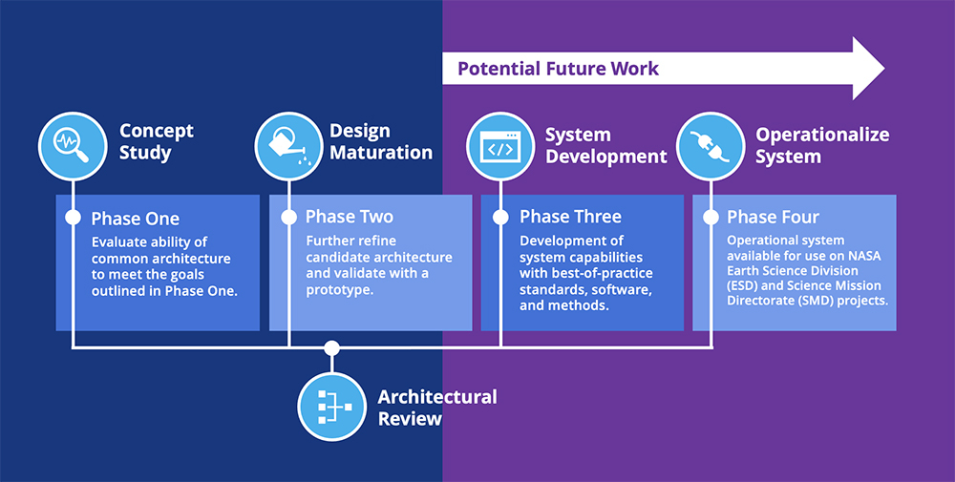The Multi-Mission Data Processing System Study is being conducted to identify the best model for an open Mission Data Processing System (MDPS) that may support upcoming missions, enable efficiencies, advance the principles of open science, and advance Earth system science and applications.
The study comprises several phases, with each phase building on the results of the previous phase. In keeping with NASA open science guidelines and objectives, all phases in the study are open and encourage participation by the broader science and data processing communities. Phase 1: Concept Study was completed in March 2023.
Phase 2: Design Review and Architecture Study
Phase 1 of the Multi-Mission Data Processing System Study concluded with a recommendation for a MDPS designated Type 2 (Managed Services), Variant 4 (encompassing infrastructure, data, catalog, and analysis and processing services) and written as T2V4.
A detailed analysis of the recommended T2V4 MDPS began in March 2023 and a final report is scheduled for release in September 2024. This follow-on investigation will increase the fidelity of the architecture by establishing the use cases, system requirements, system definition, and potential impact to upcoming missions. Phase 2 will conclude with a final report and a data processing prototype with associated documentation.

